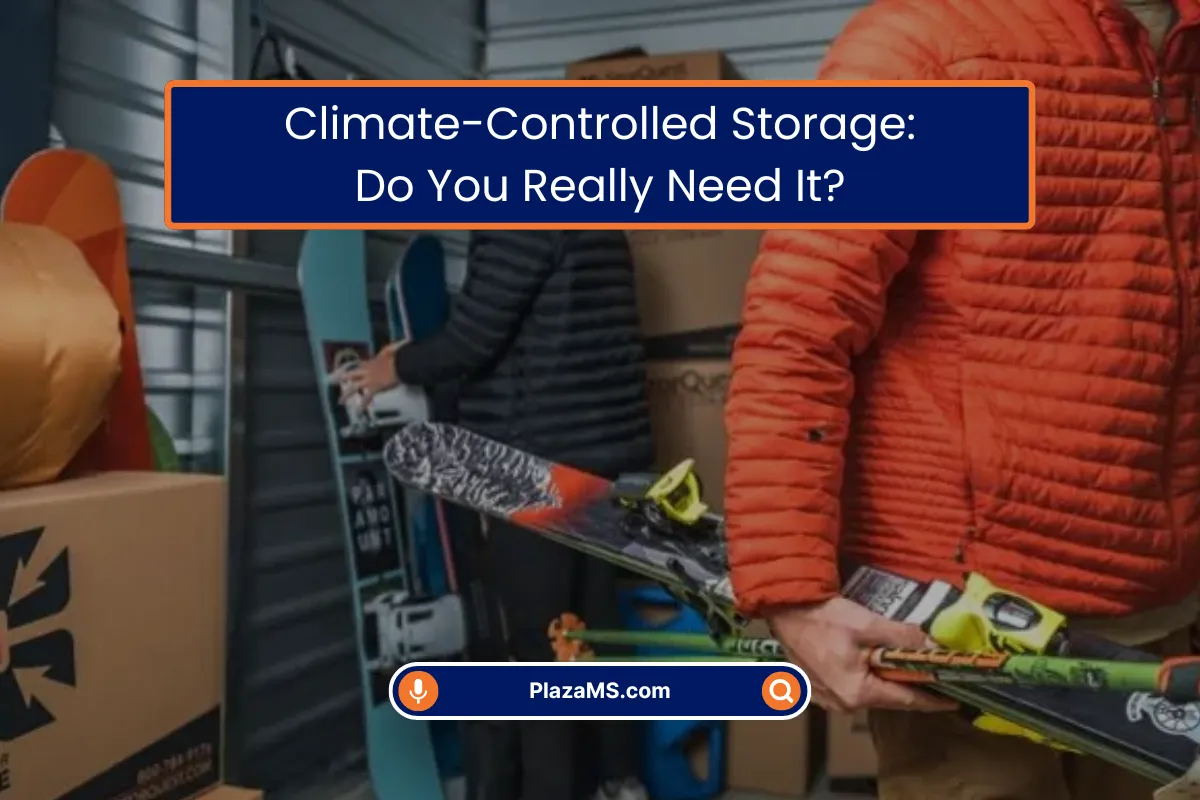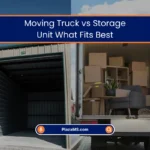Listen, I’ve been working in the storage business for over eight years now, and I can’t tell you how many times I’ve had to deliver bad news to customers. You know the kind – opening up their unit after a hot summer or brutal winter to find their belongings completely ruined.
Just last month, this sweet elderly woman came to check on her unit. She’d stored her late husband’s woodworking tools and some family furniture. When we opened that door, the smell hit us first. Then we saw the mold covering everything. She just stood there crying, and honestly, I felt terrible. All of that could’ve been prevented with climate control.
That’s when I decided I needed to write this. Because too many people think climate-controlled storage is some kind of luxury add-on. It’s not. It’s protection for the things you actually care about.
What Happens in Regular Storage Units (The Ugly Truth)
Okay, so here’s what storage companies don’t always explain clearly. Regular units? They’re basically outdoor sheds with better locks. When it’s blazing hot outside, your unit becomes an oven. When it’s freezing, everything inside gets frozen solid.
I remember this one guy – let’s call him Mike. Mike stored his vinyl collection in a regular unit. Came back after one summer to find his records had literally melted together into one giant black pancake. Twenty-five years of collecting, gone. The look on his face… I still think about it.
And it’s not just heat. Cold does damage, too. Wood splits, metal contracts, and electronics get condensation inside them. Your belongings go through this torture cycle every single day.
Temperature Isn’t Even the Worst Part
Here’s what really gets me – people focus on temperature, but humidity is the real killer. You can’t see it working, which makes it sneaky.
- High humidity grows mold. I’ve seen beautiful antique dressers completely covered in green fuzz. Photo albums where every picture is stuck together permanently. Important documents that fall apart when you touch them.
- Low humidity isn’t better. It sucks all the moisture out of everything. Leather cracks, wood splits, and paper turns yellow and brittle.
- Your basement probably has humidity problems. Your storage unit could be even worse.
The Stuff That Really Needs Protection
Now, I’m not saying everything needs climate control. Your old couch, you’re getting rid of anyway? Regular storage is fine. But some things absolutely need better treatment.
Electronics – Don’t Even Risk It
Computers, TVs, stereos, and gaming systems – moisture kills these things dead. I’ve seen laptops with circuits completely corroded from humidity. Game consoles that won’t turn on because condensation fried the insides.
These aren’t cheap to replace, and sometimes your data is gone forever, too.
Musical Instruments – They’re Like Living Things
Musicians understand this better than anyone. Guitars crack down the middle. Piano keys stick. Violin strings snap from the wood warping underneath.
I had this jazz musician who stored his saxophone collection. The pads on three of his horns got moldy and had to be completely replaced. Cost him more than two years of climate control would have.
Photos and Documents – Once They’re Gone, They’re Gone
This one hurts the most. Family photos, birth certificates, military records, kids’ school projects. When these get damaged, you can’t just buy new ones.
I helped a family clean out their unit after it flooded from condensation. Three generations of family photos were basically soup. The grandmother was devastated. Those memories were just… gone.
Furniture – Especially the Good Stuff
Cheap furniture might survive regular storage. Good furniture won’t. Real wood needs stable conditions. Leather needs the right humidity. Fabric can get musty smells that never come out.
Anything Worth Keeping
Here’s my rule of thumb: if you care enough to store it instead of throwing it away, it probably deserves climate control.
What Climate Control Actually Does?
Climate-controlled units stay between about 60-80 degrees year-round. More importantly, they keep humidity levels steady – usually around 40-50%.
These aren’t just regular units with a space heater thrown in. They’re in insulated buildings with proper HVAC systems. The air gets filtered, too, so there’s less dust settling on your stuff.
Most importantly, everything stays consistent. No wild swings that make materials expand and contract until they break.
Yeah, It Costs More – But Think About It This Way
Climate control usually adds maybe 30-40% to your monthly cost. So if regular storage is $100, climate might be $135.
Sounds like a lot until you think about what you’re protecting. That guitar you stored? Probably worth more than two years of storage fees. Your computer? Same thing.
But honestly, some things you just can’t put a price on. Your wedding photos. Your kid’s baby clothes you’re saving. Your dad’s tools. What’s that worth to you?
Location Makes a Huge Difference
If you live somewhere with crazy weather – Arizona heat, Minnesota winters, Florida humidity – regular storage is almost guaranteed to damage your stuff.
But even in mild climates, you get those freak weather events. Heat waves, cold snaps, and unusually humid summers. Your belongings don’t know it’s “supposed to be mild.”
My Personal Experience (Why I Always Recommend It)
I’ve seen too much heartbreak in this job. The woman with the moldy furniture. Mike with his melted records. The family with the ruined photos.
But I’ve also seen the relief on customers’ faces when they open a climate-controlled unit after months away and everything looks exactly like they left it.
That’s why at our facility, I always explain the real benefits of climate-controlled storage. We’ve invested in top-quality HVAC systems because we’ve seen what happens when belongings aren’t properly protected, and we never want our customers to experience that kind of loss.
Some Real Talk About Making the Decision
Look, I’m not trying to upsell you. I genuinely want your stuff to survive storage. Here’s how I tell people to decide:
- Walk through what you’re storing. Pick up each item and ask: “If this got ruined, how would I feel?”
- If the answer is “pretty upset” or “devastated,” then you need climate control.
- If the answer is “oh well, I was getting rid of it anyway,” then regular storage is fine.
The Things Nobody Tells You
Here are some things I’ve learned that most people don’t know:
- Cardboard boxes fall apart in humidity. Use plastic containers for important stuff.
- Don’t store things in garbage bags – they trap moisture.
- Even climate-controlled units can have issues if the facility skimps on maintenance.
- Location within the building matters – units near doors or loading areas might have more temperature swings.
My Bottom Line Advice
After eight years of watching people’s belongings get destroyed by preventable damage, my advice is simple: if it’s worth storing, it’s worth protecting properly.
The extra money for climate control isn’t really an expense. It’s insurance. And unlike most insurance, you’ll actually see the benefit – your stuff will be in the same condition when you take it out as when you put it in.
I sleep better at night knowing our customers’ belongings are safe. You should, too.
Don’t learn this lesson the hard way like Mike did with his records, or that sweet lady with her husband’s tools. Protect your stuff from day one.
Trust me on this – your future self will thank you when you open that storage unit door and everything is exactly as you left it. That peace of mind? It’s priceless.












0 Comments